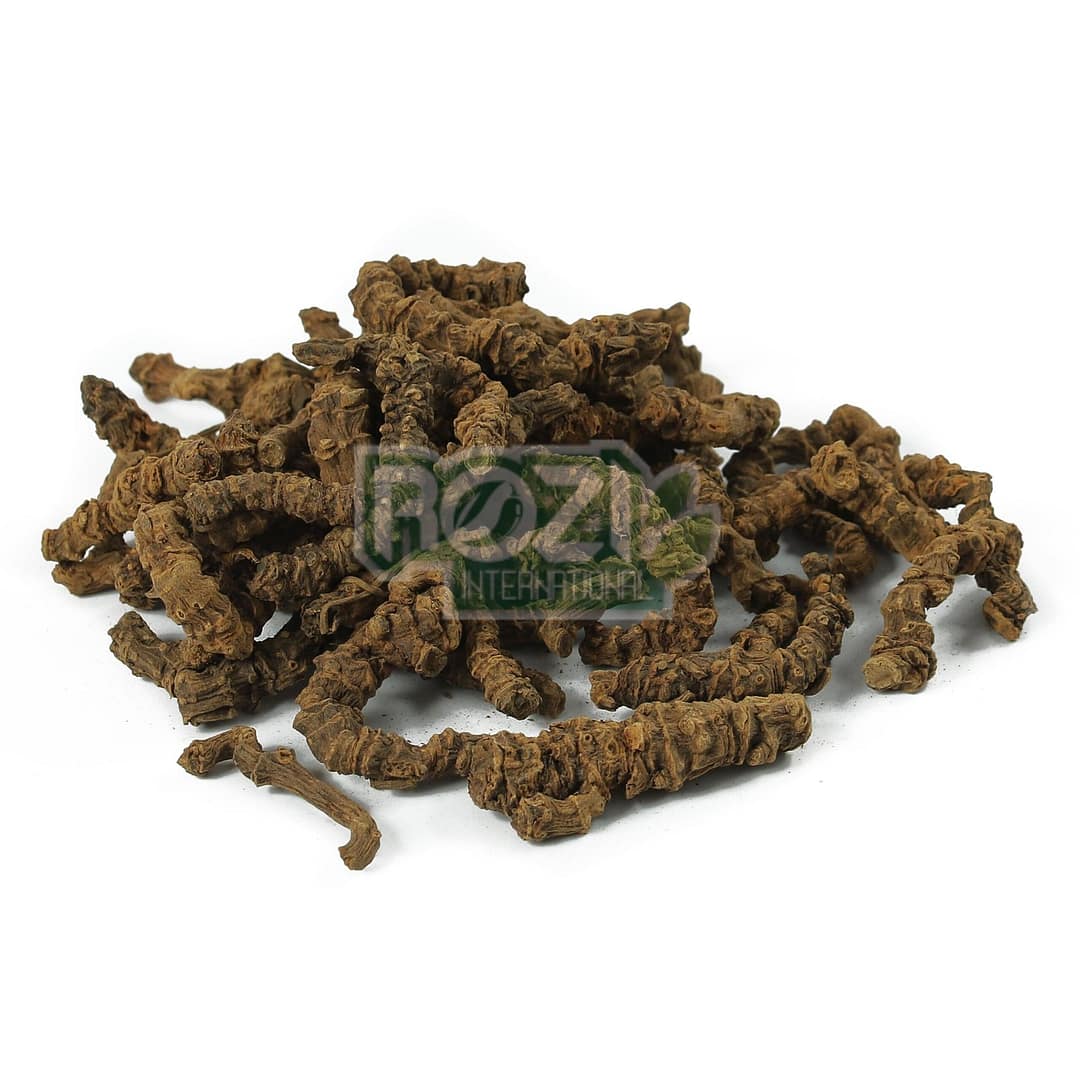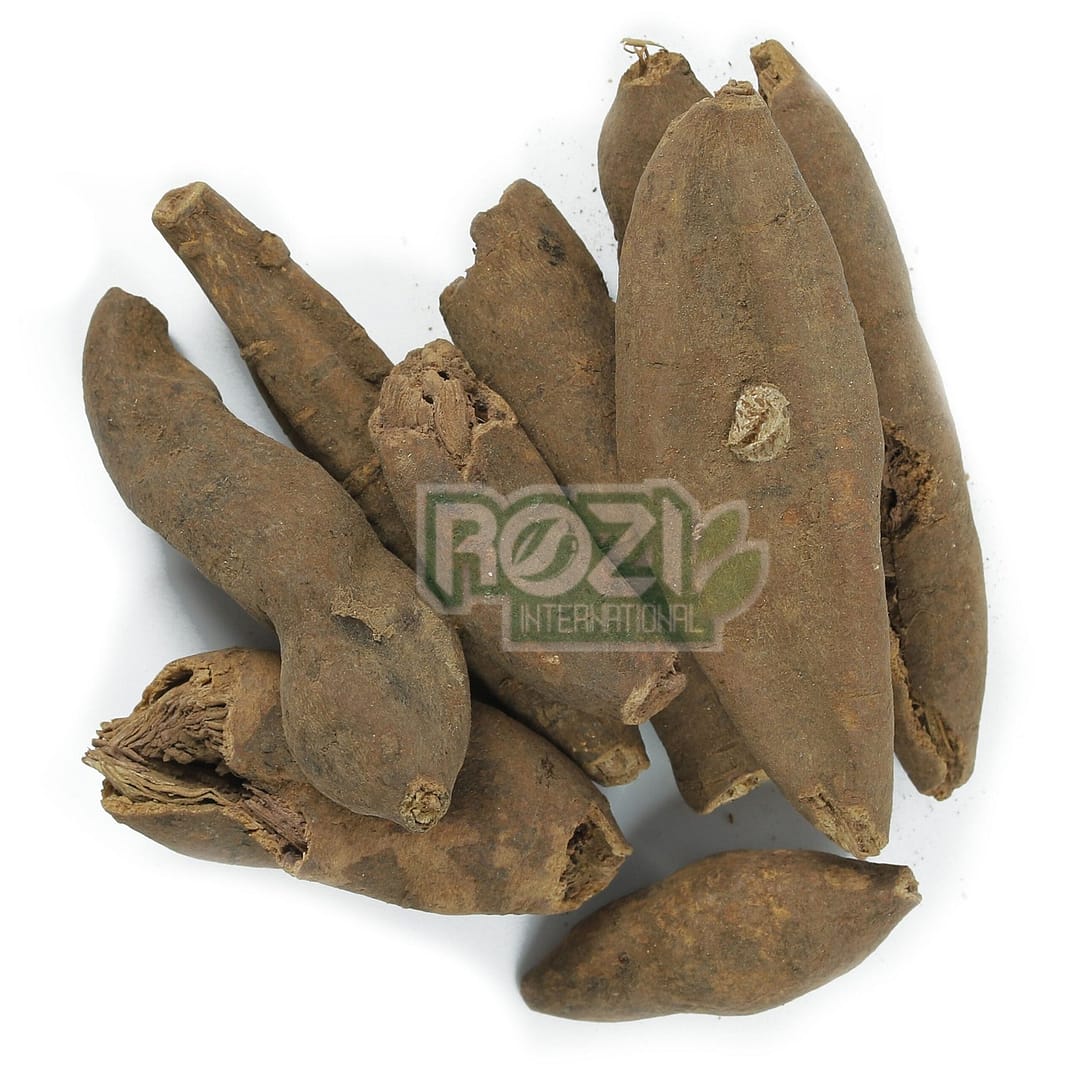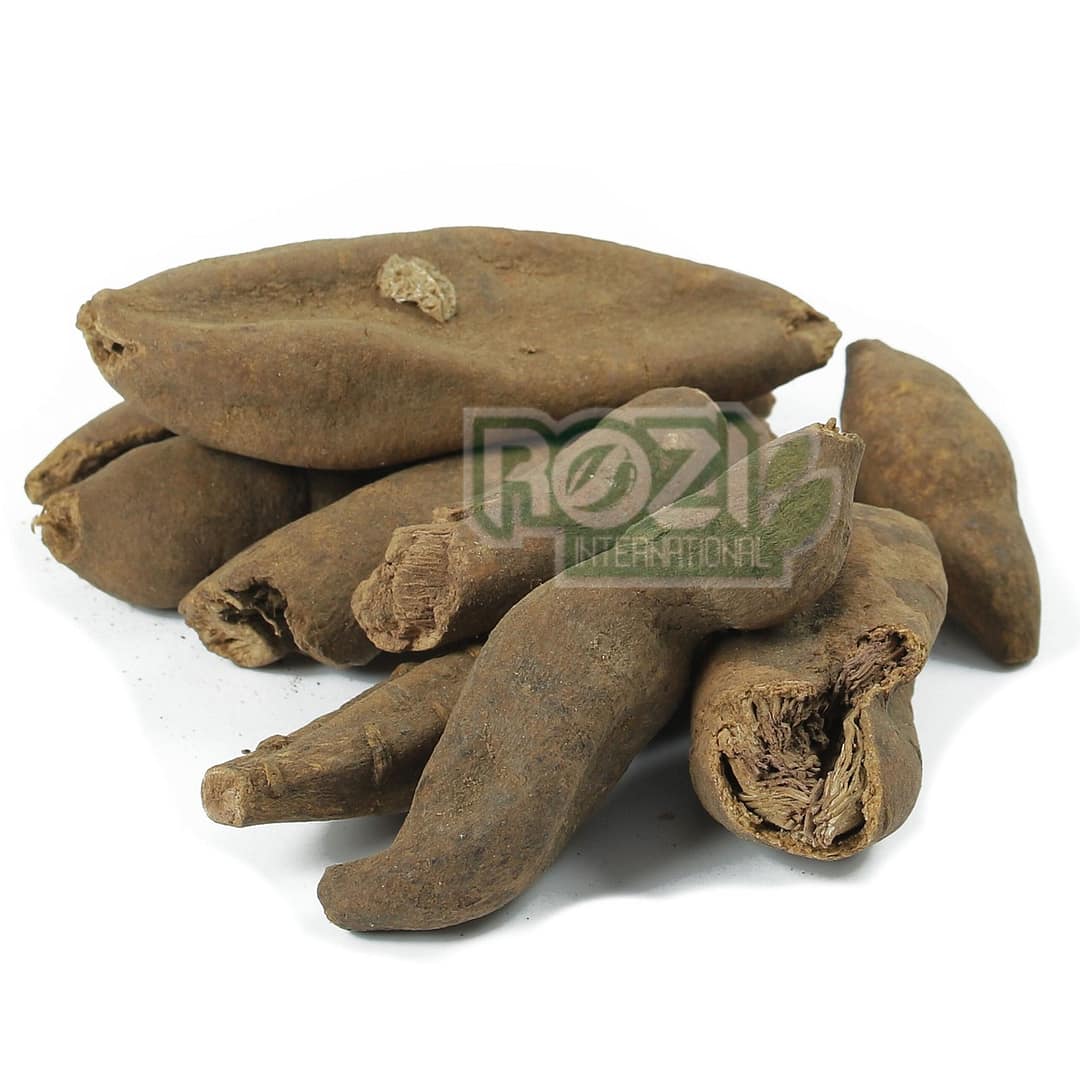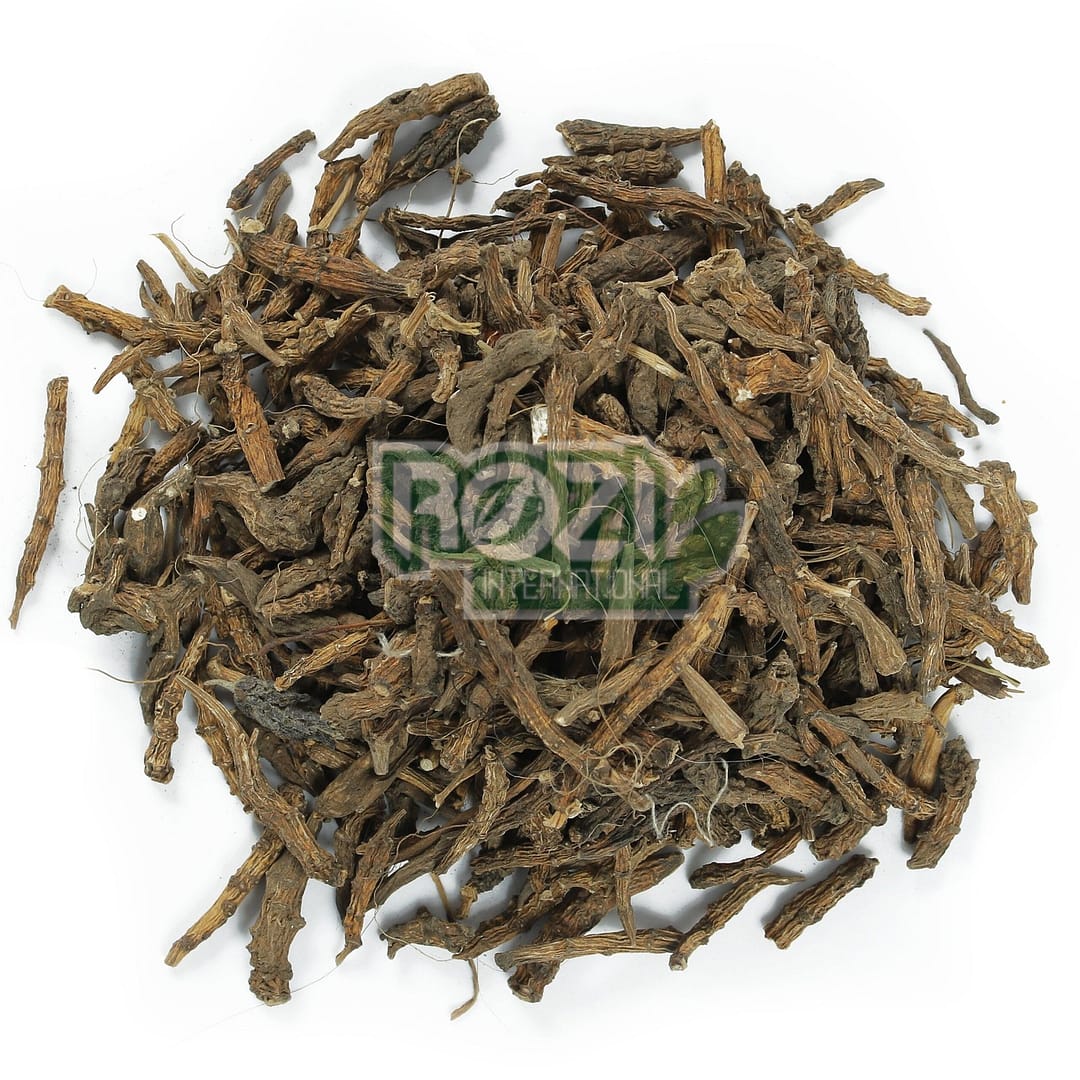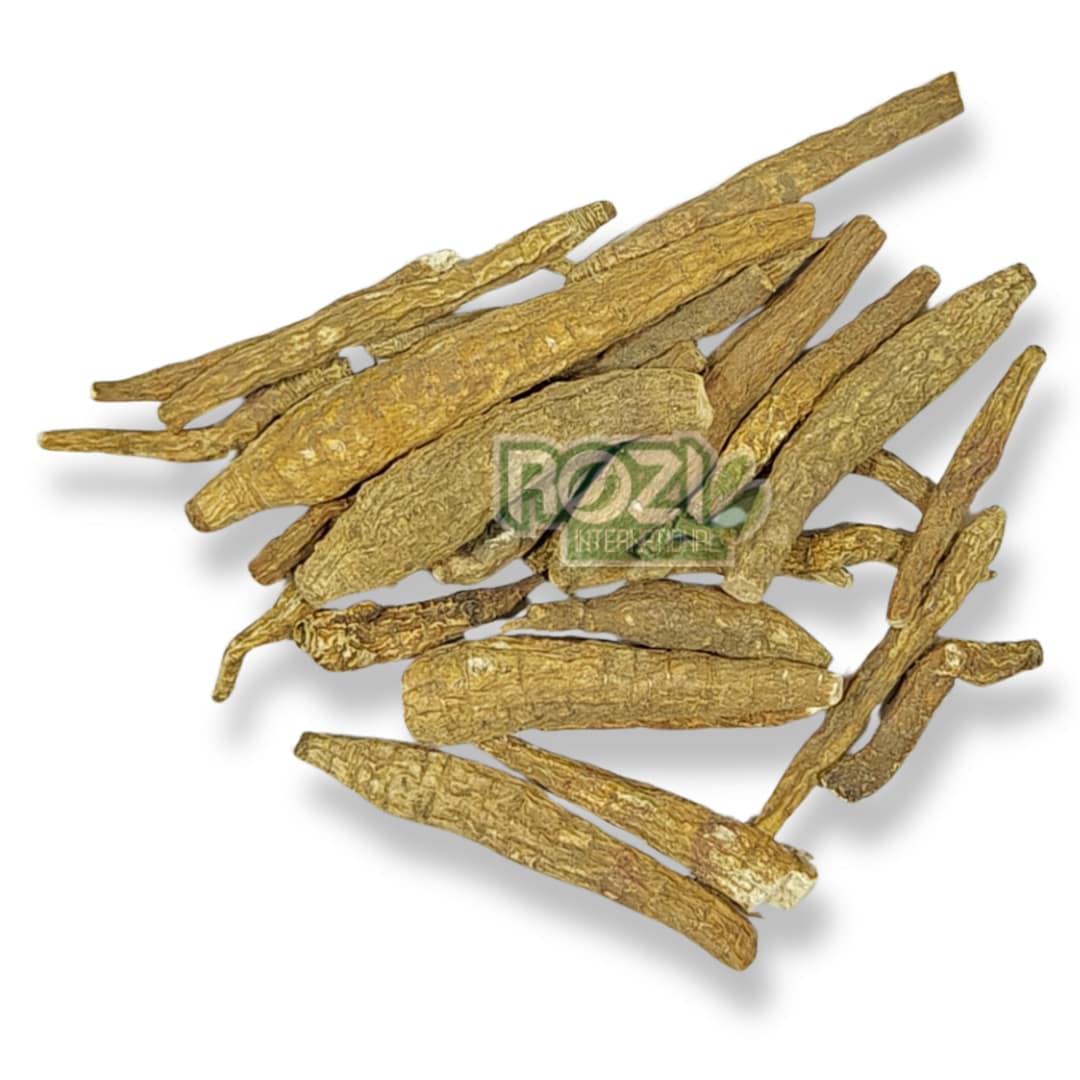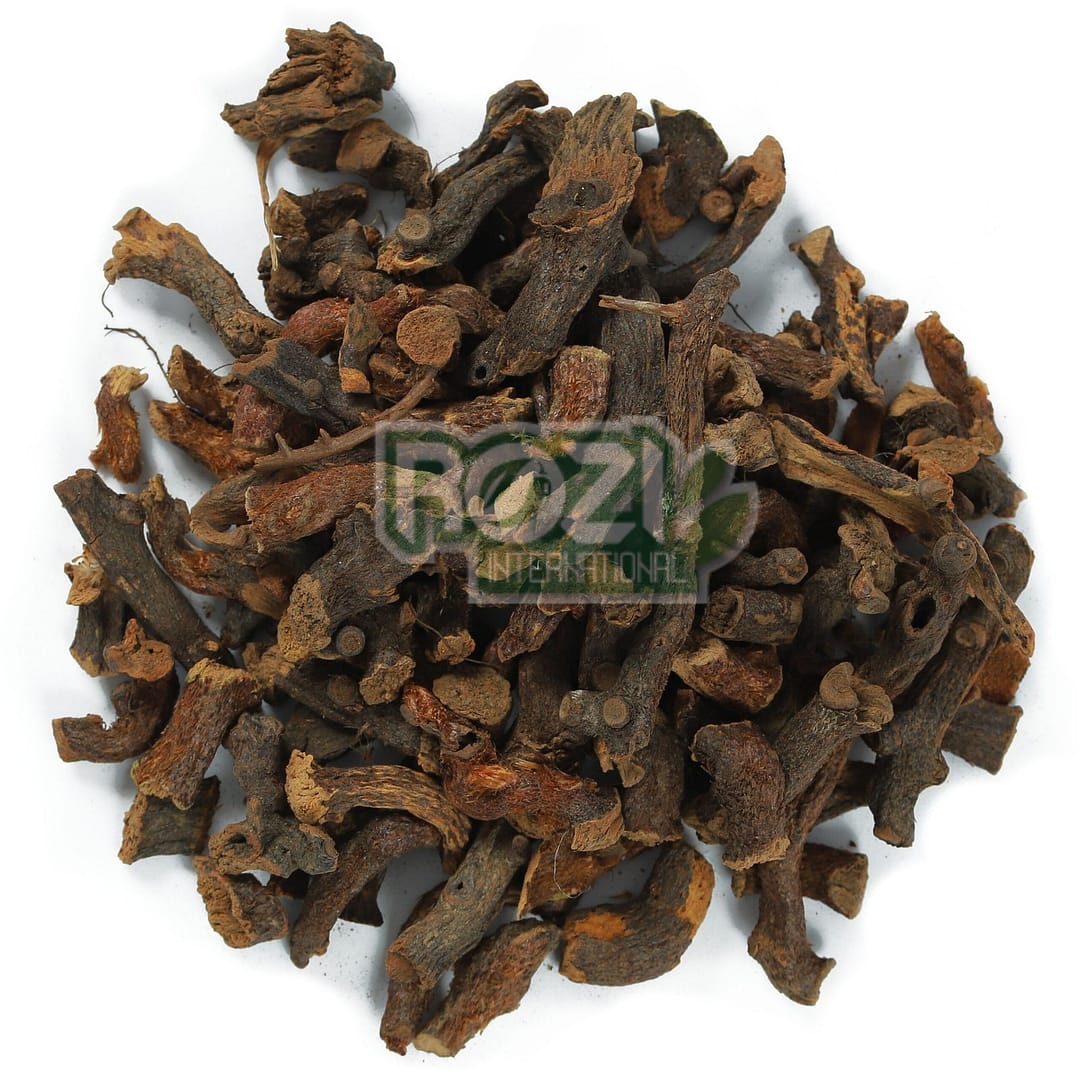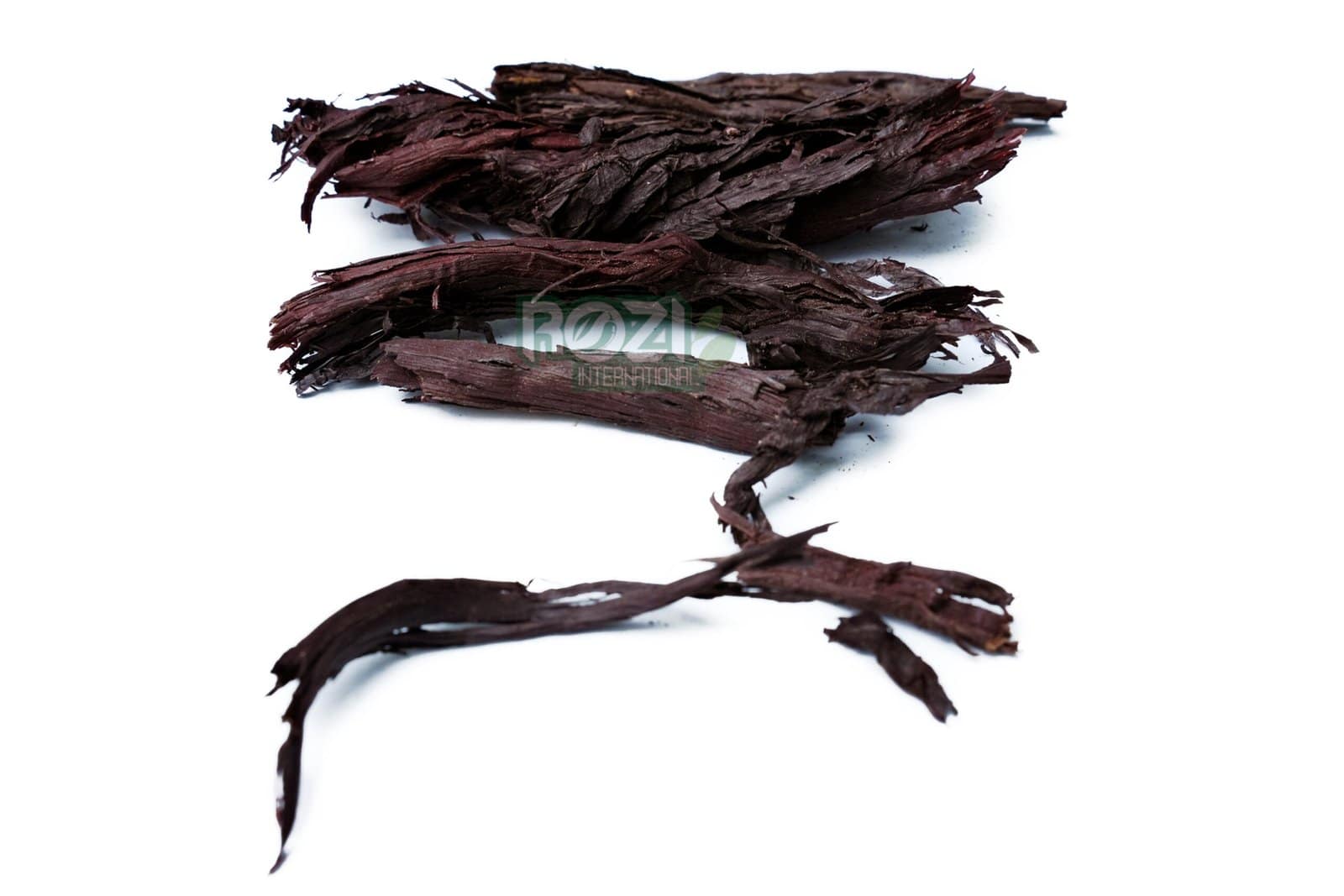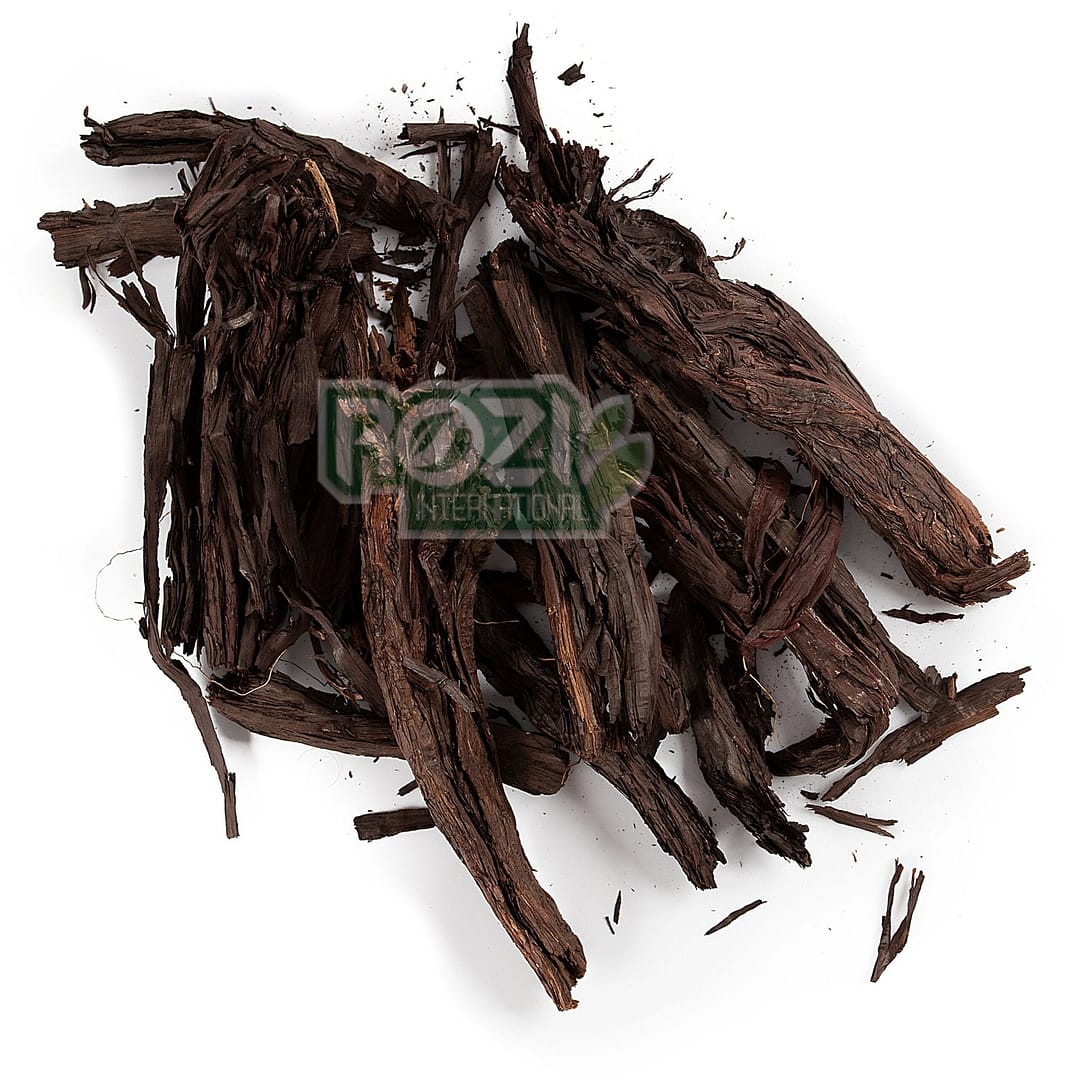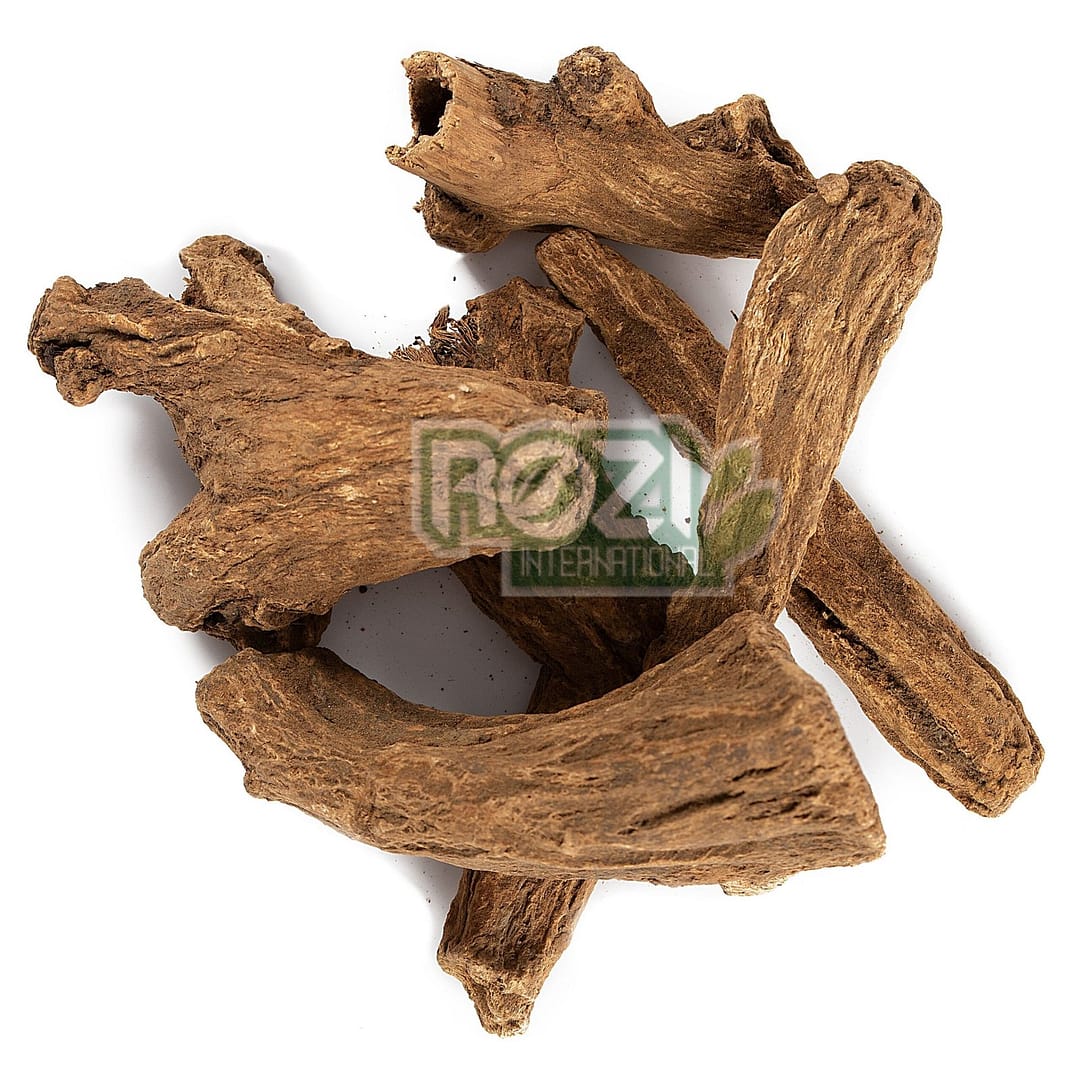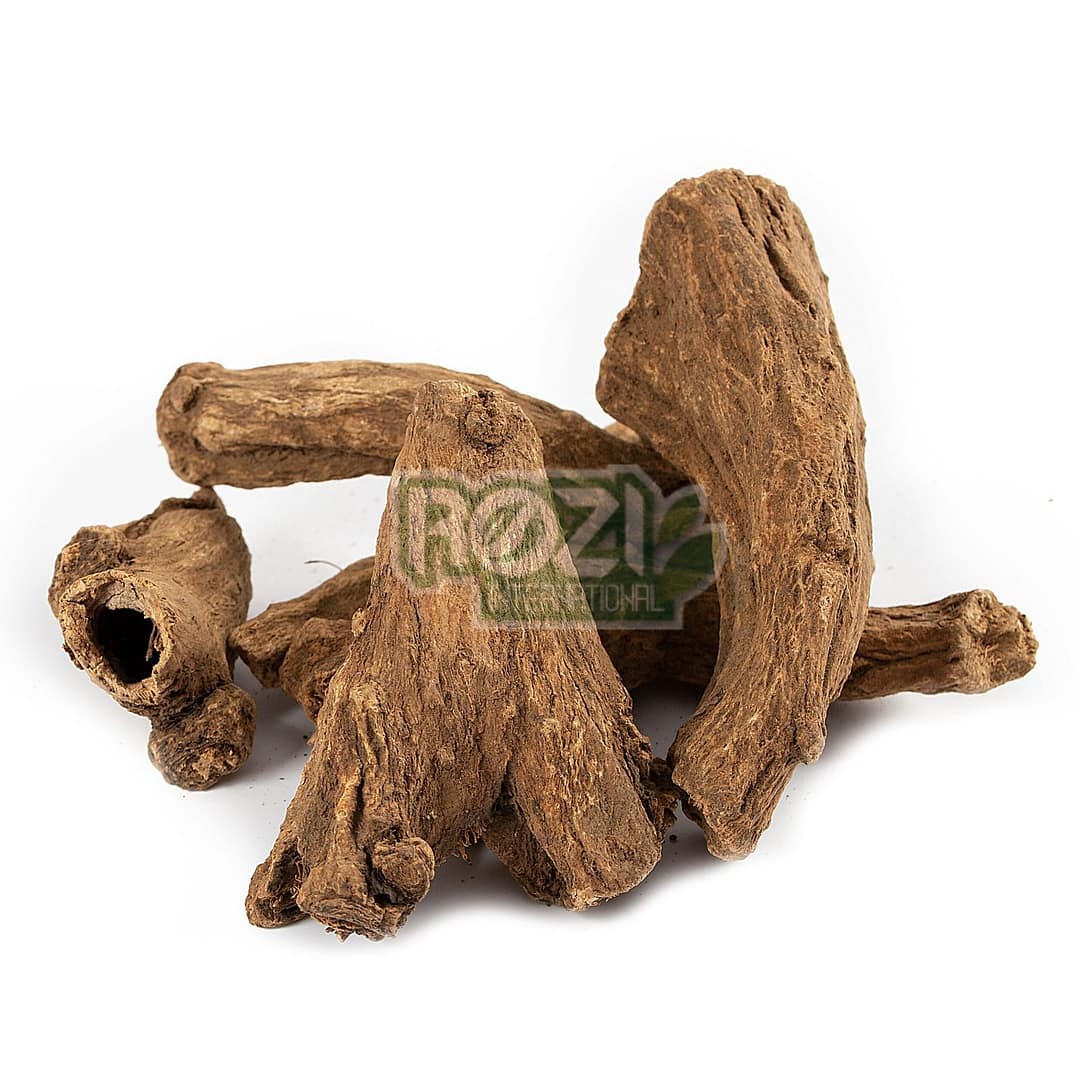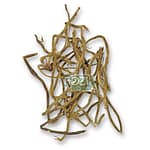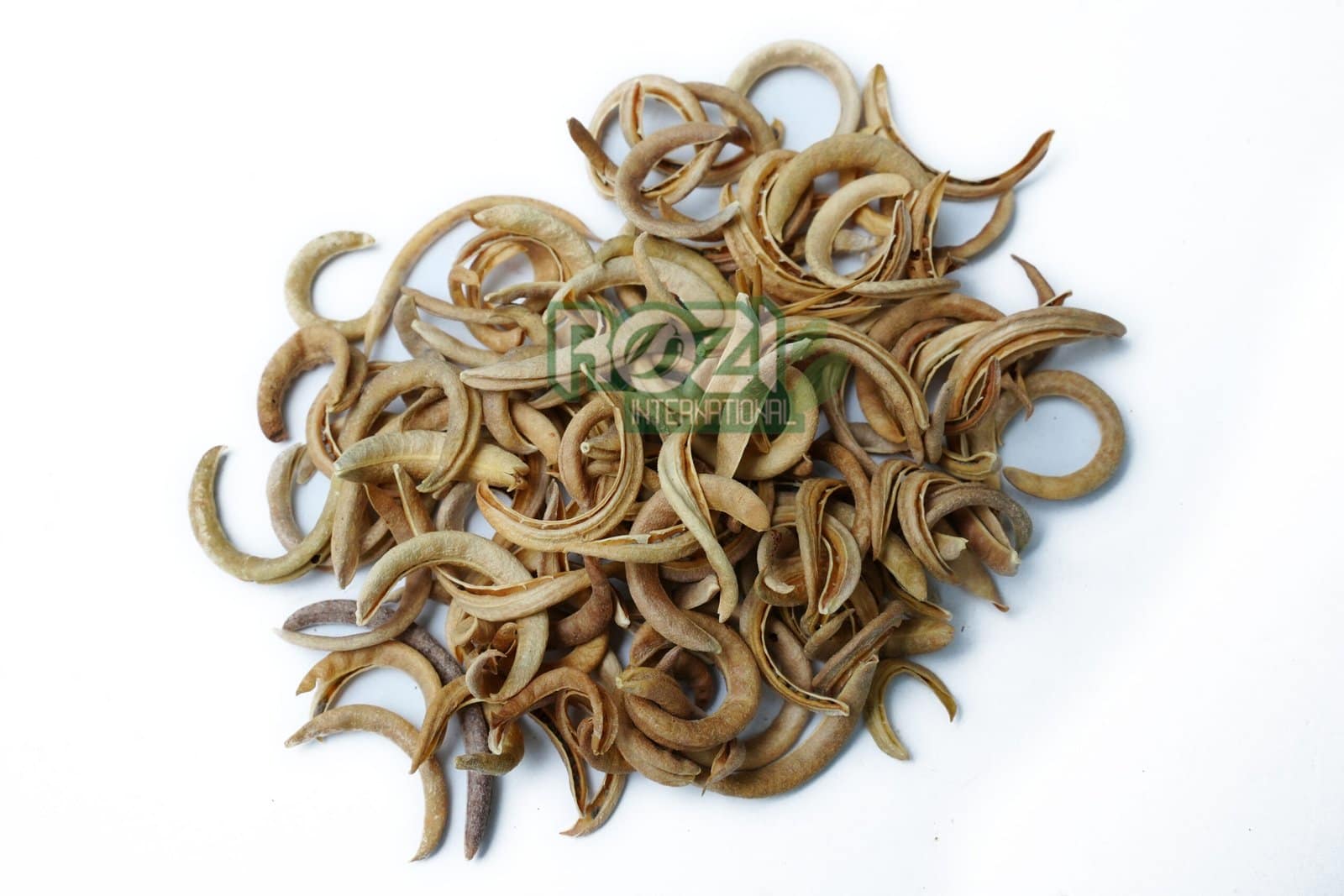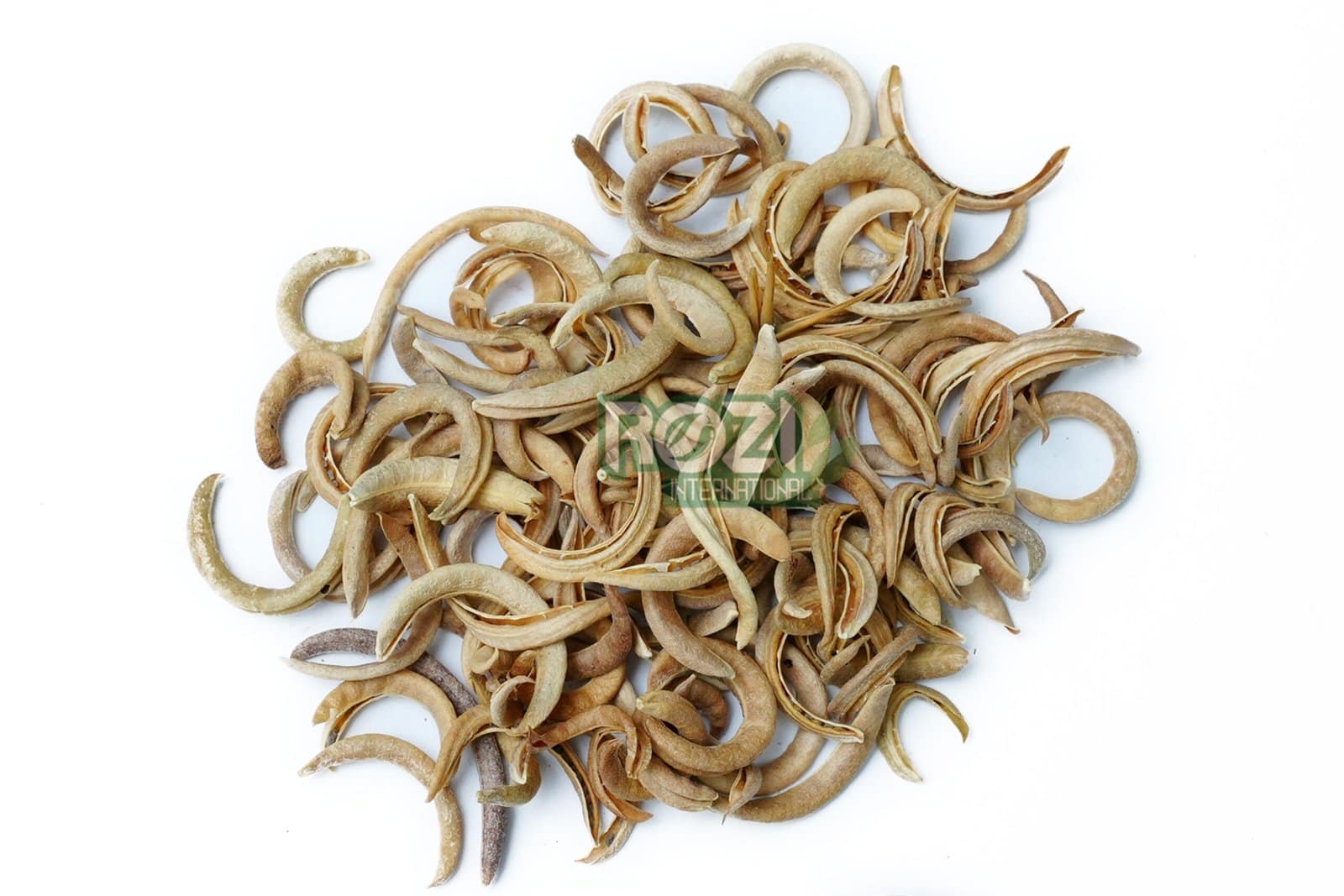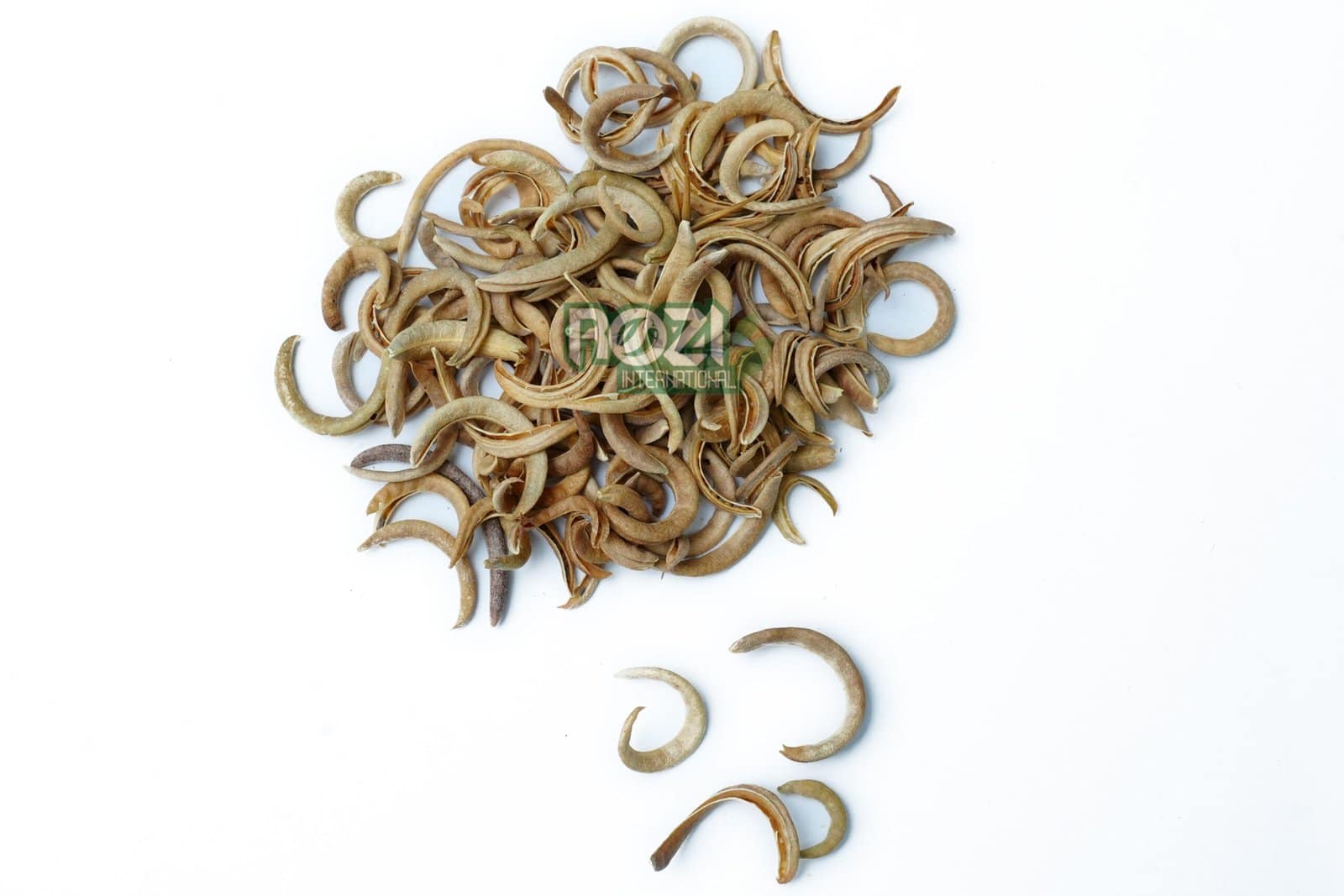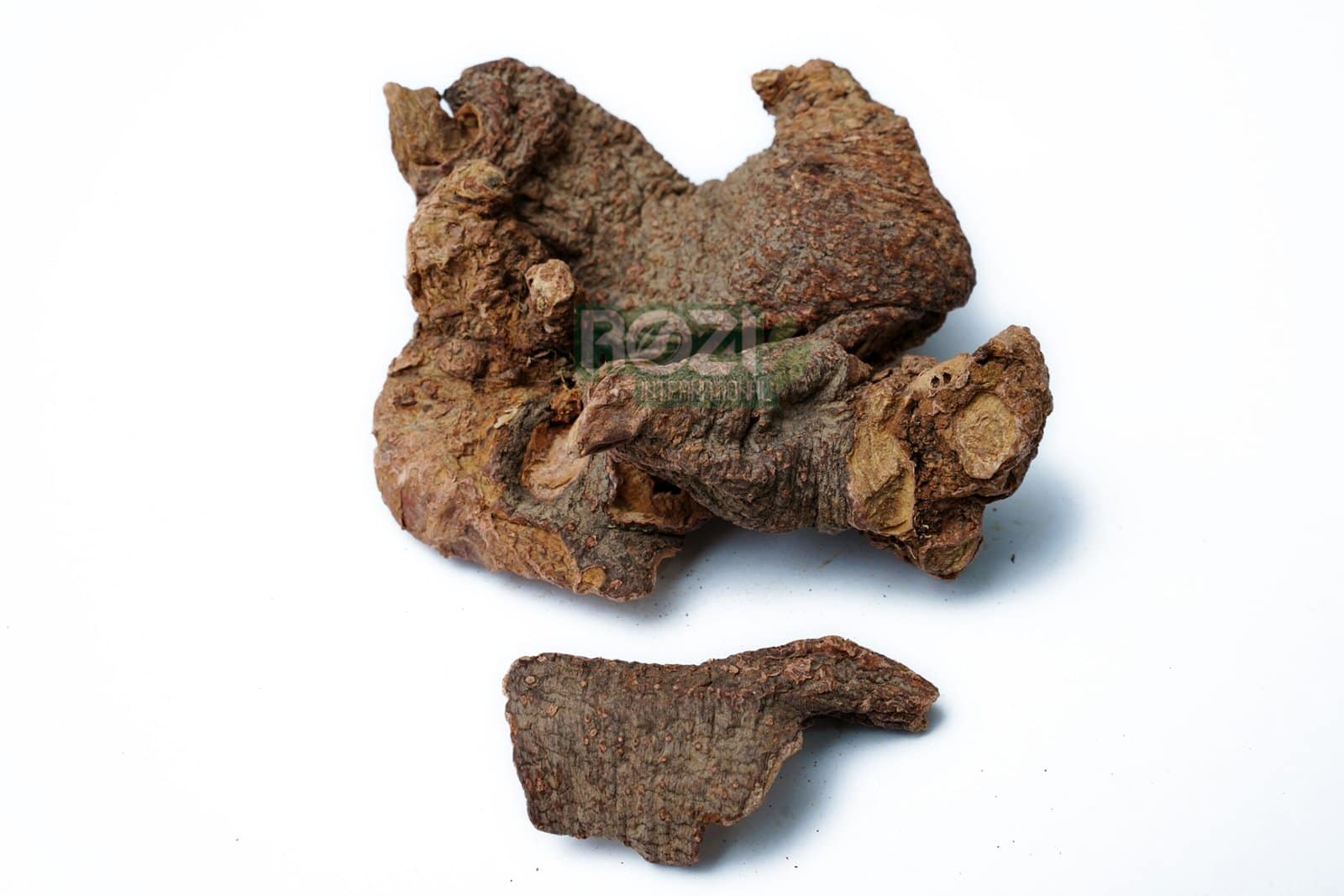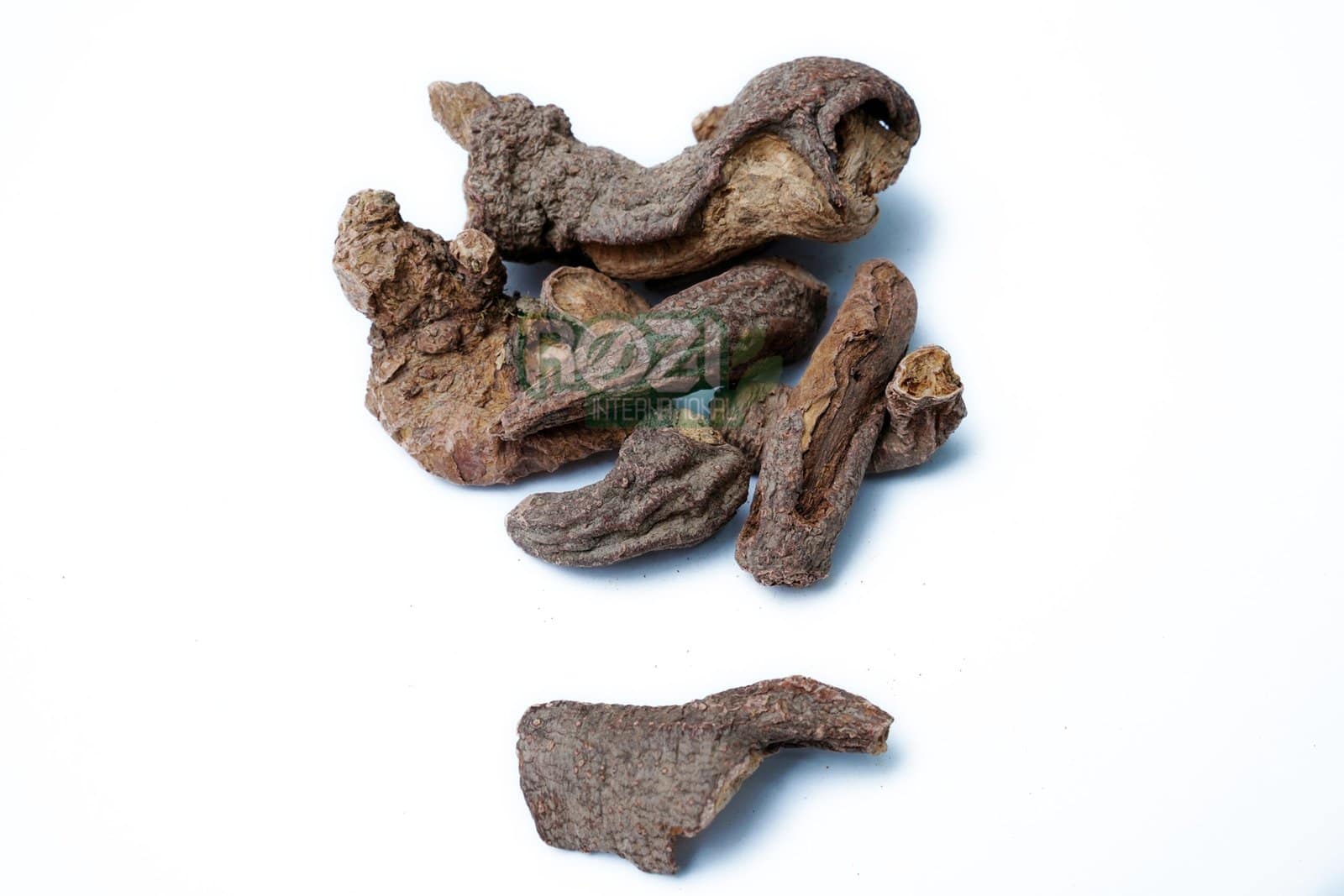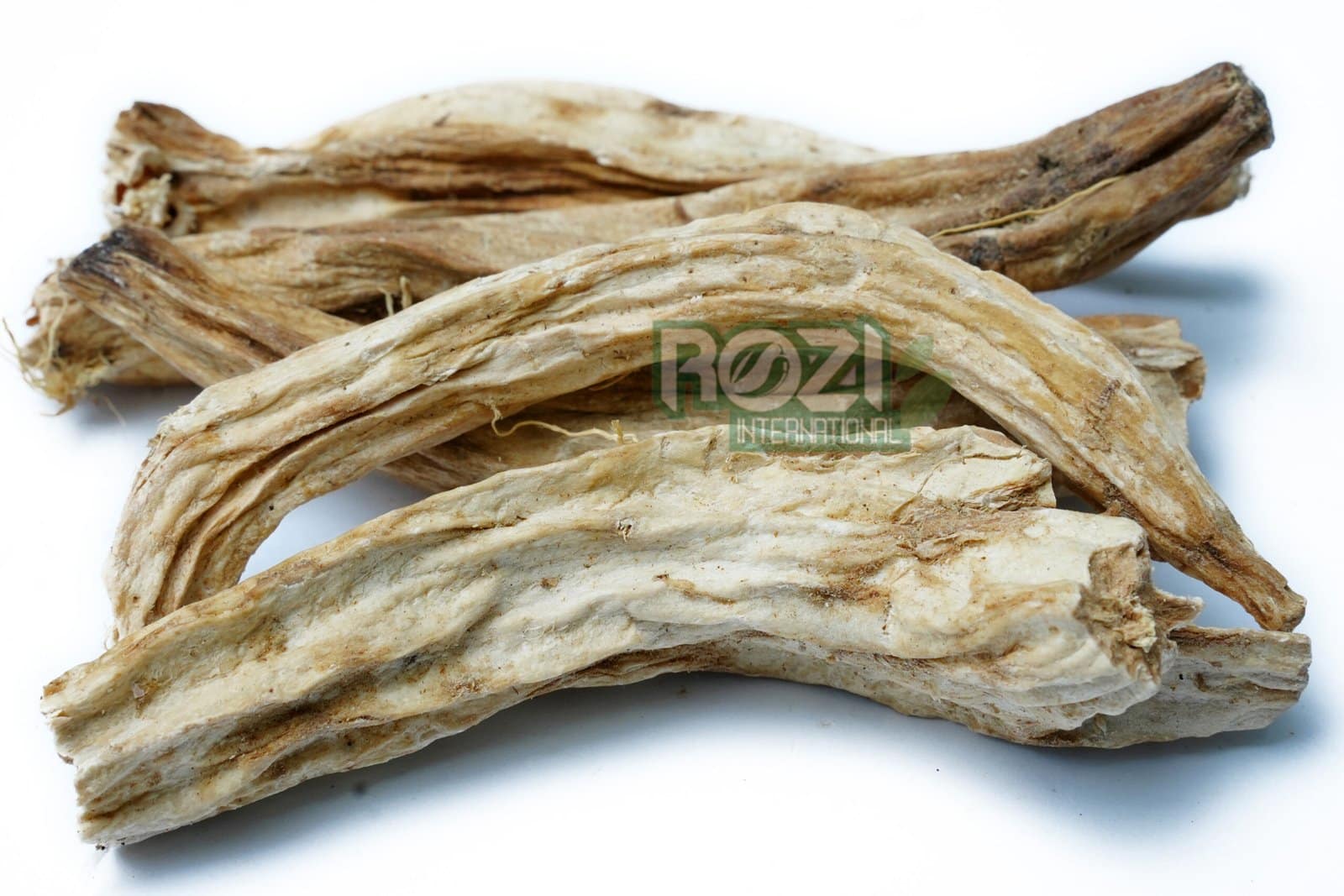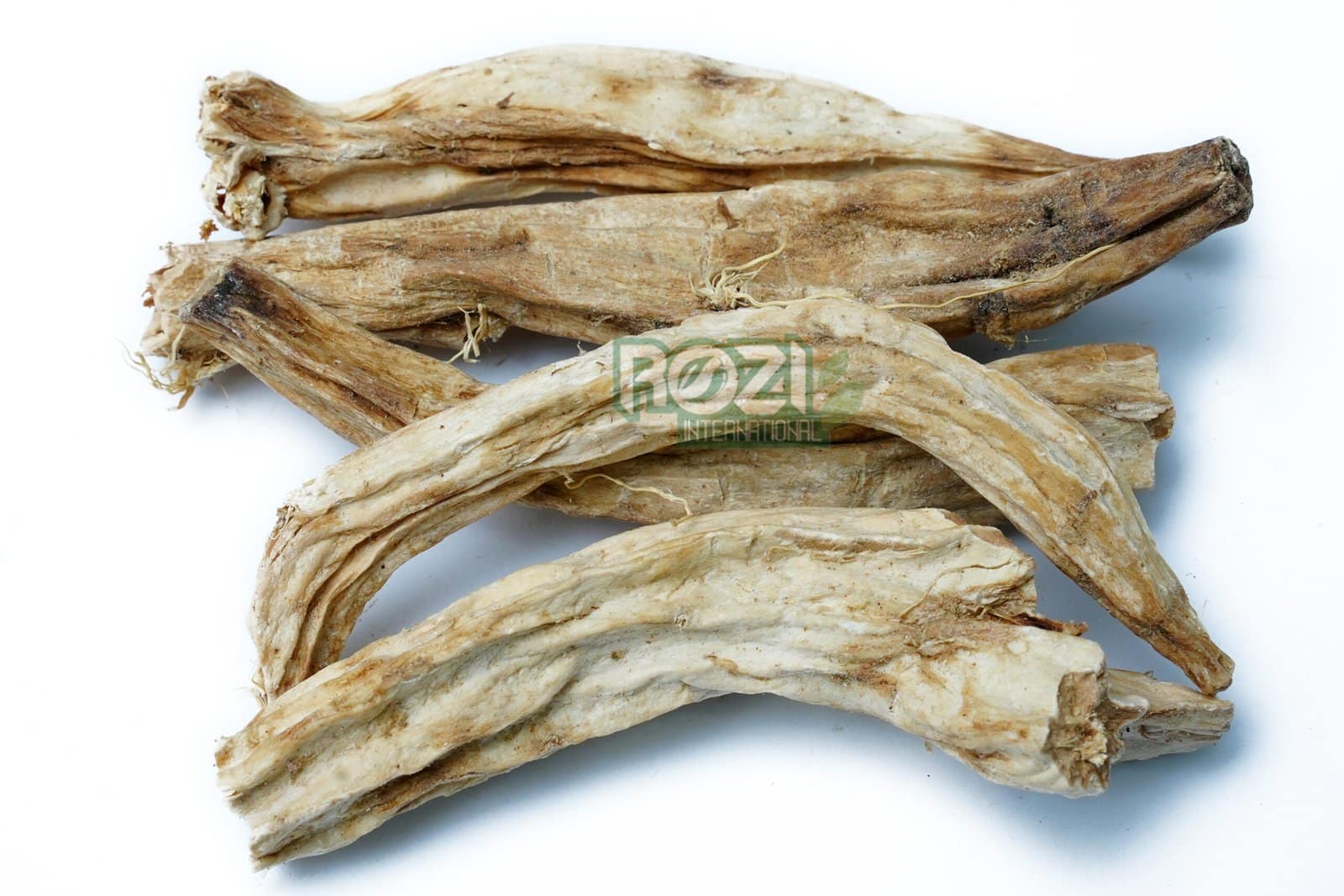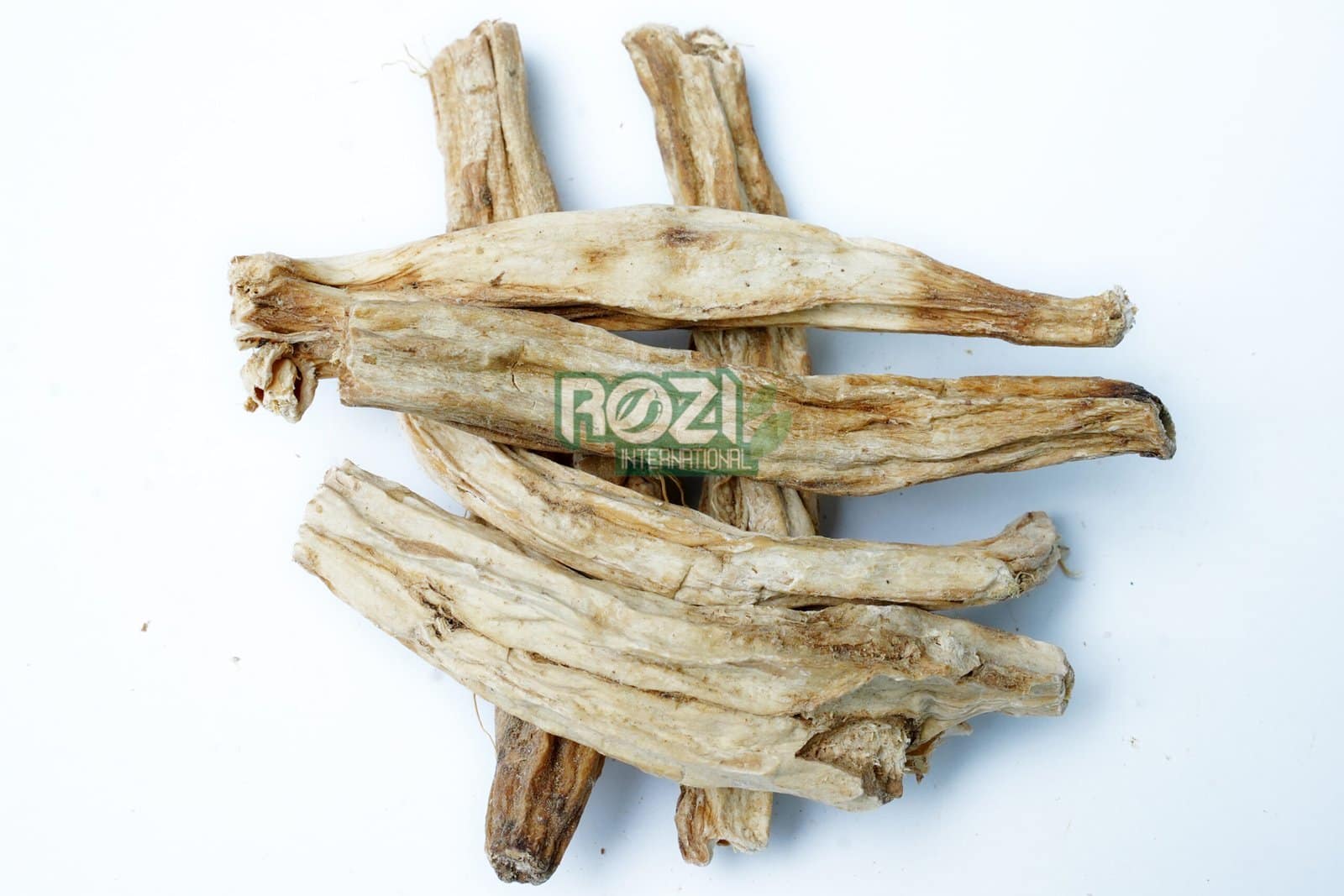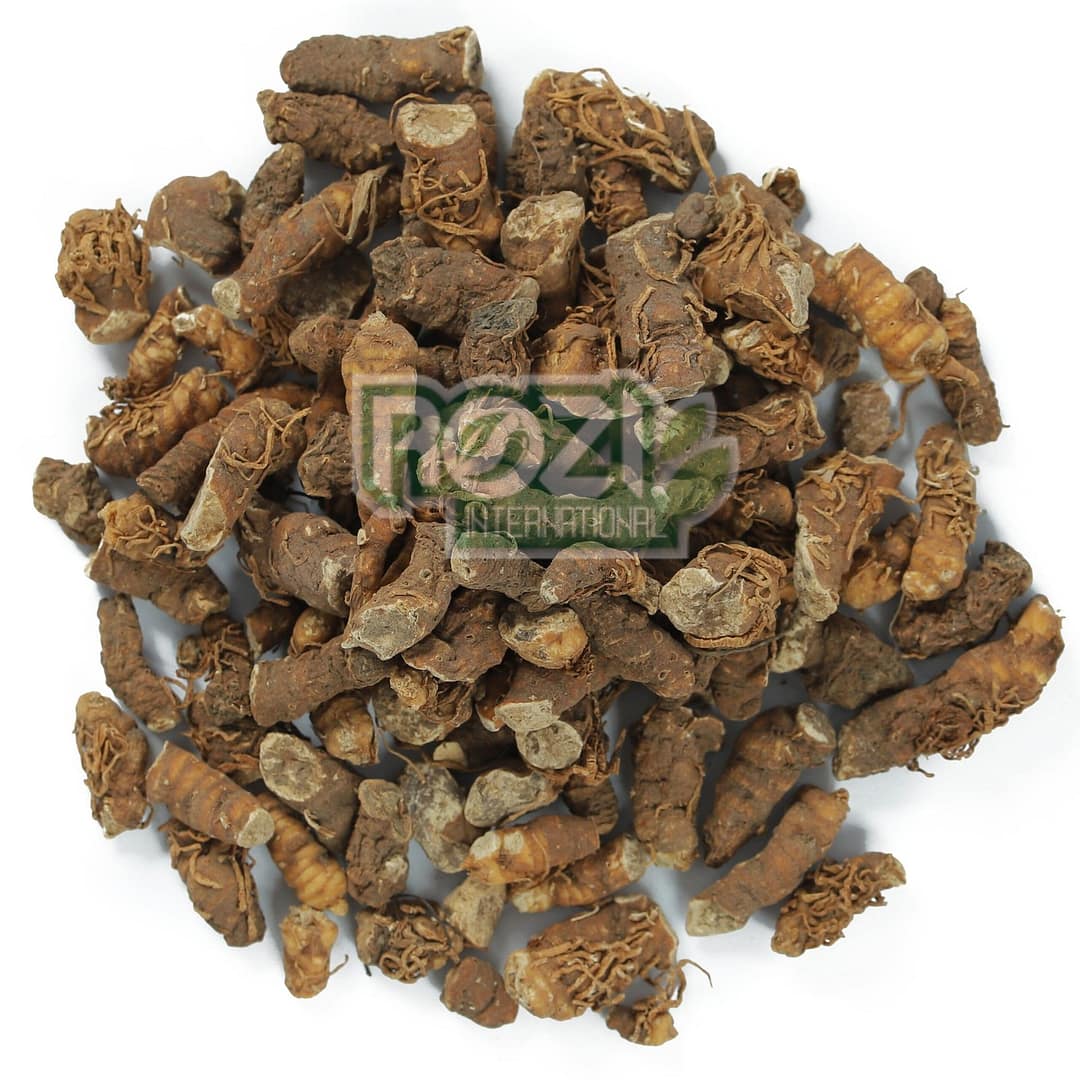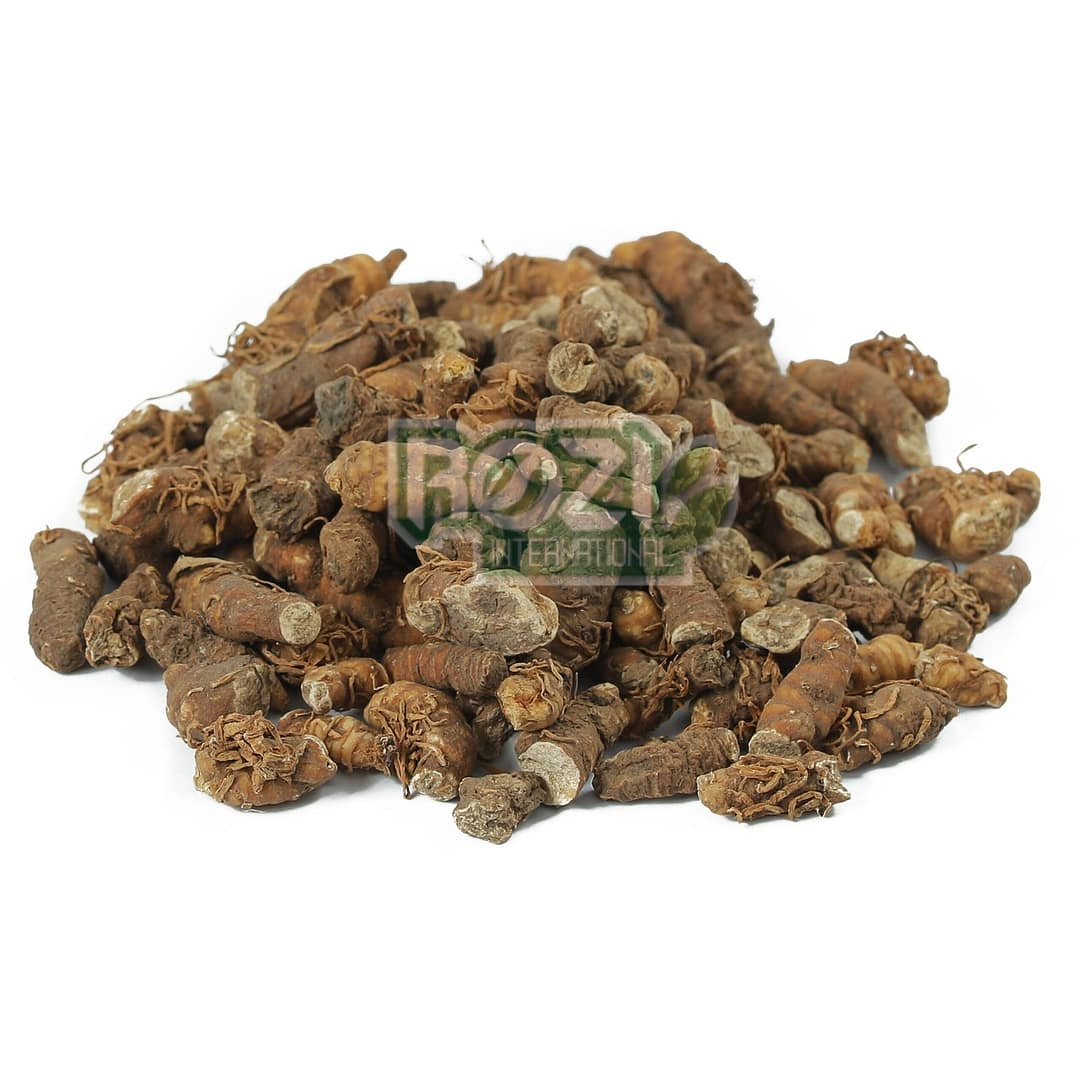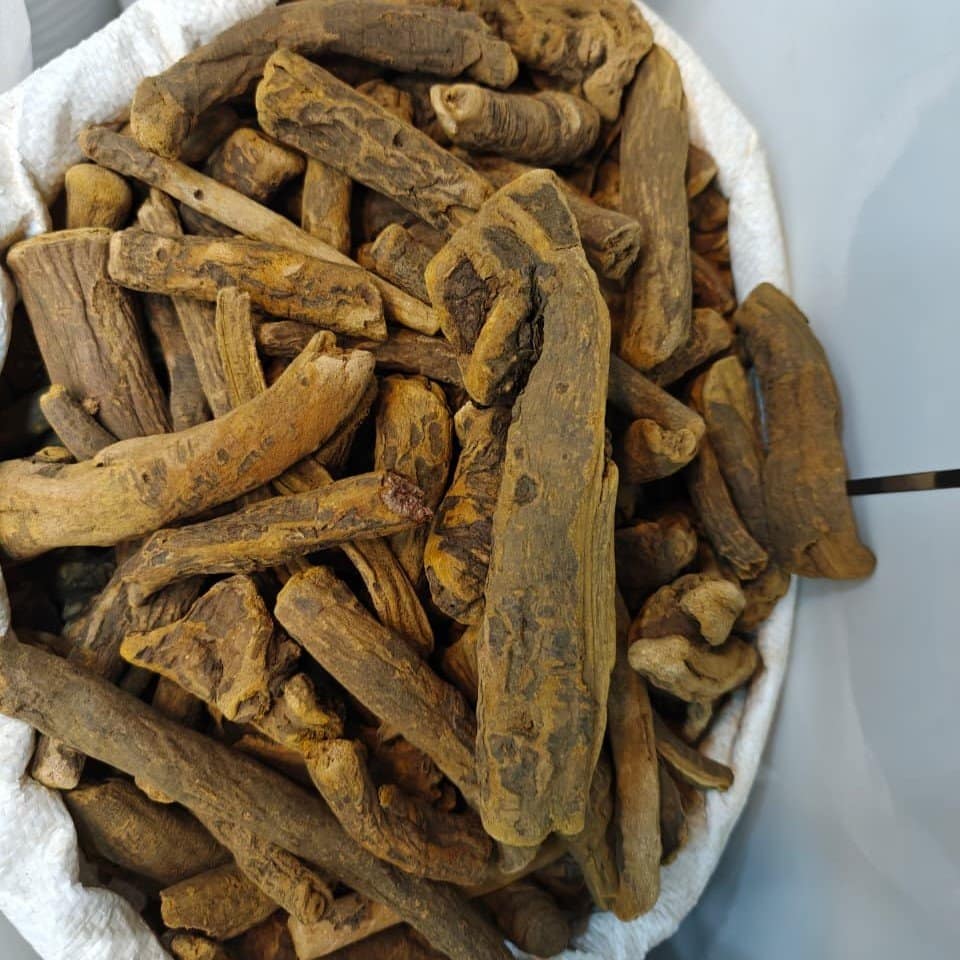Picrorhiza Kurrooa / Picorrhiza kurroa / Kutki
English Name: Picrorhiza Kurrooa
Botanical Name: Picrorhiza Kurrooa
Local Name: Kutki
Product Description
Picrorhiza is a plant that grows in the Himalayan mountains. People, especially practitioners of Ayuverdic medicine, use the root and rhizome (underground stem) for treatment. Picrorhiza has been harvested to near extinction.
Picrorhiza kurroa is one of the major income generating non-timber forest products found in the Nepalese Himalayas. It is one of the oldest medicinal plants traded from the Karnali zone. Known as kutki in Nepali, it is a perennial herb and is used as a substitute for Indian gentian (Gentiana kurroo).
Paeoni Roots/Paeonia officinalis / Oud Saleb
English Name: Paeoni Roots
Botanical Name: Paeonia officinalis
Local Name: Oud Saleb
Product Description
Paeonia, commonly known as peony, is a genus of flowering plants in the family Paeoniaceae. The plants in this genus are perennials, and they are known for their large, showy, and often fragrant flowers. While peonies are primarily cultivated for their ornamental value, their roots, particularly the species Paeonia lactiflora, have been used in traditional medicine in various cultures.
Peony roots, or Paeoni Radix, have been used in traditional Chinese medicine (TCM) for centuries. The dried and processed roots of Paeonia lactiflora, known as Bai Shao or White Peony Root, are a common ingredient in TCM formulations. Bai Shao is believed to have various medicinal properties, including its ability to nourish the blood, calm the liver, and alleviate pain. It is often used in TCM to treat conditions related to menstrual health, muscle cramps, and emotional imbalances.
Aconit Sweet /Aconitum Heterrophyllum / Atees Shiri
English Name: Aconit Sweet
Botanical Name: Aconitum Heterrophyllum
Local Name: Atees Shiri
Product Description
Aconite Sweet, commonly known as Atees or Ativisha, is a medicinal herb native to the Himalayan region. It features deeply lobed leaves and bell-shaped flowers, usually blue or violet. The plant’s tuberous roots are highly valued in traditional medicine, particularly in Ayurveda, for their effectiveness in treating digestive disorders, fever, respiratory ailments, and general weakness. Aconitum heterophyllum is considered a vital remedy for its non-toxic nature compared to other species of the Aconitum genus, though it should still be used with care.
Overharvesting and habitat loss have pushed this plant to the brink of endangerment, making sustainable cultivation and conservation efforts crucial. Its declining population emphasizes the need for awareness and responsible use to ensure its availability for future generations. The plant is a reminder of the delicate balance between traditional medicinal practices and ecological preservation.
Aconit Bitter /Aconitum Heterrophyllum / Atees Talakh
English Name: Aconit Bitter
Botanical Name: Aconitum Heterrophyllum
Local Name: Atees Talakh
Product Description
These perennial plants grow to a height of 0.6 to 1.5m and resemble delphiniums. Aconite has characteristic helmet-shaped blue or purple flowers. Occasionally, the flowers maybe white, pink, peach or yellow in color. More than 100 species of Aconitum are found throughout the temperature zones of the United States and Canada. These plants are also found throughout many parts of Asia, Africa and Europe. They contain poisonous alkaloids such as aconite.
Traditional Chinese practitioners use aconite for pain relief caused by trigeminal and intercostal neuralgia, rheumatism, migraine, and general debilitation.
Joint Pine/ Ephedra Vulgaris / Soma Kalpa
English Name: Joint Pine
Botanical Name: Ephedra Vulgaris
Local Name: Soma Kalpa
Product Description
Ephedra fragilis, commonly named the joint pine, is a species of Ephedra that is native to Eastern Mediterranean region of Southern Europre and Norhtern Africa, and from Maderia and the Canary Islands in the Atlantic. Its habitats are rocky hills and stone walls, where it grows to 6 feet tall.
In North America plants on the Ephedra genus, commonly known as Mormon tea, Brigham tea or whorehouse tea, have been widely used for several medicinal purposes.
The herb Ephedra sinica, used in traditional Chinese medicine, contains ephedrine and pseudoephedrine as its principal active constituents. The stems are the source of famous drug ephedrine and stems contain the other alkaloid, pseudo ephedrine.
Turpeth Roots /Operculina turpethum / Tirvi Sufaid
English Name: Turpeth Roots
Botanical Name: Operculina turpethum
Local Name: Tirvi Sufaid
Product Description
Turpeth roots, botanically known as Operculina turpethum, are the tuberous roots of a perennial climbing plant native to tropical regions of Asia and Africa. Also commonly referred to as Indian Jalap, this plant has been traditionally used in various medicinal practices for its therapeutic properties.
The turpeth root is characterized by its woody, gnarled appearance and its bitter taste. In traditional medicine, particularly in Ayurveda, it is valued for its laxative, purgative, and detoxifying properties. The root contains active compounds like resins, glycosides, and alkaloids, which contribute to its medicinal benefits. It is often used to treat constipation, promote bowel movements, and alleviate digestive issues.
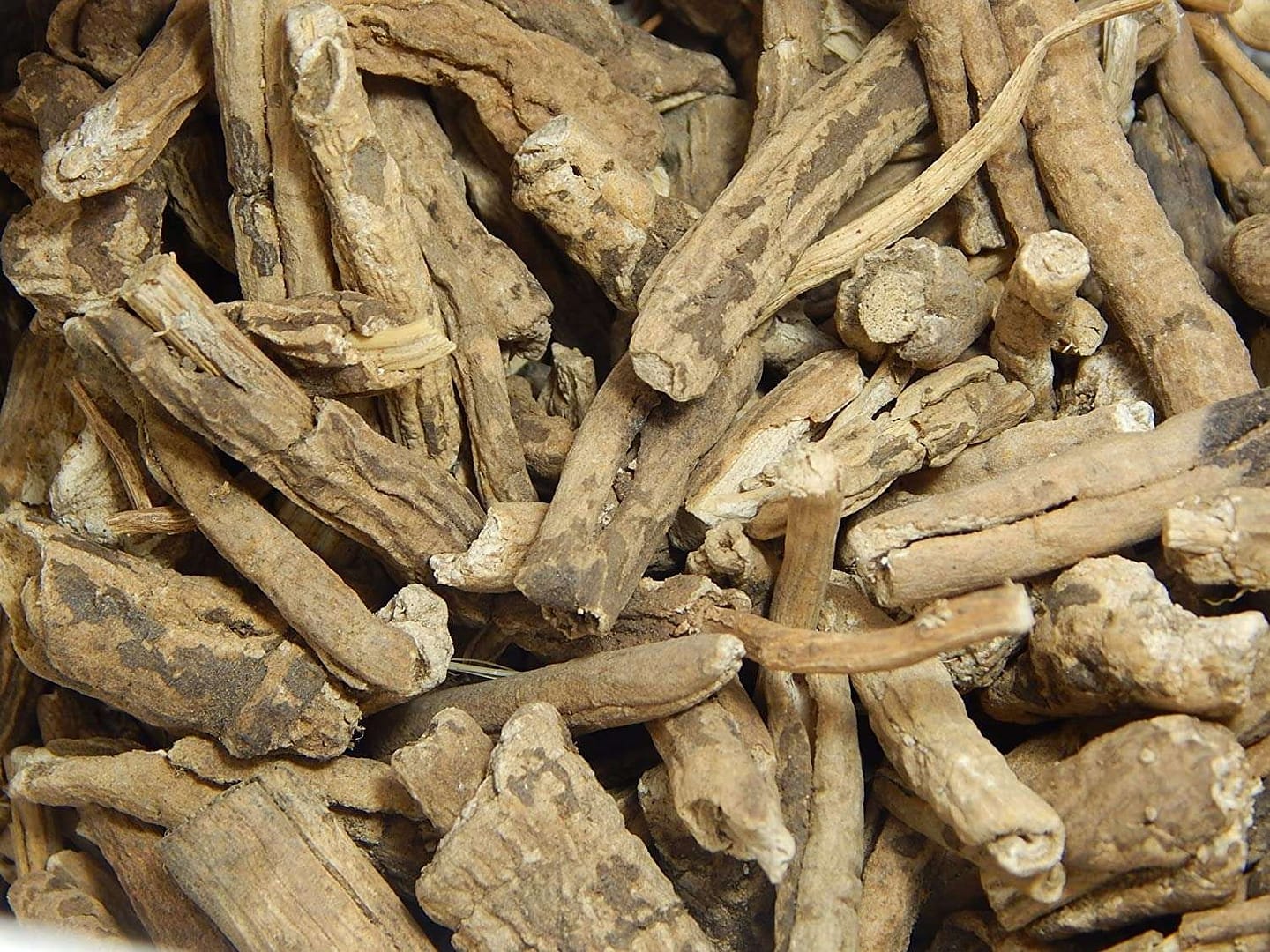
Common Polypody /Polypodium vulgare Linn/ Bisfaij
English Name: Common Polypody
Botanical Name: Polypodium vulgare Linn
Local Name: Bisfaij
Product Description
Common Polypody, scientifically known as Polypodium vulgare, is a resilient and adaptable fern species that thrives in various habitats across the globe. This fern is characterized by its delicate, pinnately compound fronds that form a lush, spreading rosette. Each frond is made up of numerous small, rounded leaflets, giving it a feathery appearance.
Common Polypody is often found growing on rocks, walls, and tree trunks, displaying its ability to flourish in both shady and sunny environments. Its tenacity and adaptability make it a common sight in forests, woodlands, and rocky landscapes.
The rhizome of the common polypody is used in many traditional healing systems, including Unani, Ayurveda, European, and Chinese. It has been used to treat a variety of ailments, including jaundice, scurvy, dropsy, and rheumatic swelling
Ginseng Root White/ Ginseng / Ginseng Sufaid
English Name: Ginseng Root White
Botanical Name: Ginseng
Local Name: Ginseng Safaid
Product Description
Ginseng, a revered herb known scientifically as Panax ginseng, is a perennial plant native to the cool and shaded forests of Asia and North America. Its name, “Panax,” is derived from the Greek word meaning “all-healing,” reflecting its long-standing reputation in traditional medicine as a powerful adaptogen and tonic.
The ginseng plant is characterized by its fleshy roots, which are the most valued part of the plant due to their medicinal properties. These roots often resemble the human form, with some even being described as anthropomorphic. Ginseng plants typically have compound leaves and produce clusters of small, yellow-green flowers and red berries.
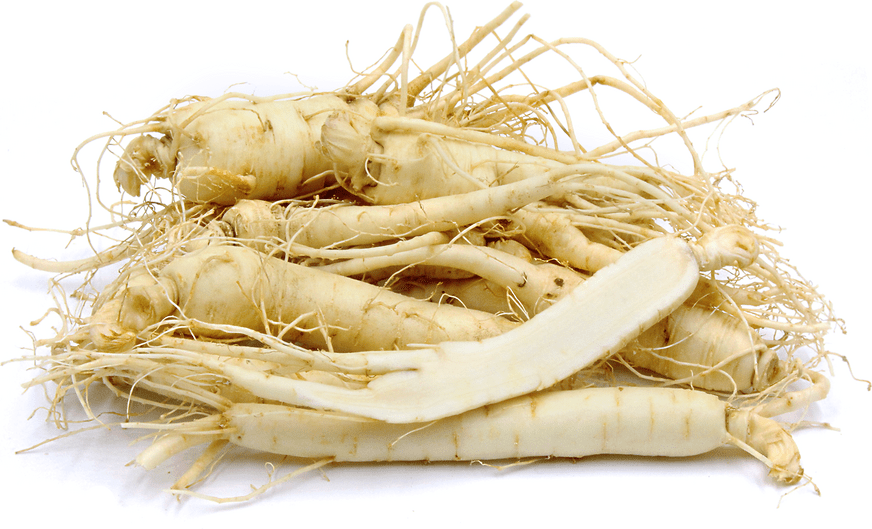
Alkanet Root (A Quality)/ Alkanna Tinctoria / Ratanjot
English Name: Alkanet Root
Botanical Name: Alkanna tinctoria
Local Name: Ratanjot
Product Description
Alkanet root, scientifically known as Alkanna tinctoria, is a perennial herb native to the Mediterranean region and parts of Asia. This plant is renowned for its vibrant blue to purple flowers and its dark red to brownish-black roots, which are the primary source of its historical and contemporary uses.
Traditionally, alkanet root has been used as a natural dye and a coloring agent. When infused in oils or mixed with other substances, it imparts a deep red to maroon hue, making it valuable in the textile industry and for coloring cosmetics, soaps, and ointments. Its natural coloring properties have also found applications in traditional arts and crafts.
Alkanet Root (B Quality)/ Alkanna Tinctoria / Ratanjot
English Name: Alkanet Root
Botanical Name: Alkanna tinctoria
Local Name: Ratanjot
Product Description
Alkanet root, scientifically known as Alkanna tinctoria, is a perennial herb native to the Mediterranean region and parts of Asia. This plant is renowned for its vibrant blue to purple flowers and its dark red to brownish-black roots, which are the primary source of its historical and contemporary uses.
Traditionally, alkanet root has been used as a natural dye and a coloring agent. When infused in oils or mixed with other substances, it imparts a deep red to maroon hue, making it valuable in the textile industry and for coloring cosmetics, soaps, and ointments. Its natural coloring properties have also found applications in traditional arts and crafts.
Costus Root Bitter/ Saussurea costus/ Kuth Talakh
English Name: Costus Root
Botanical Name: Saussurea costus
Local Name: Kuth Talakh
Product Description
Costus root, also known as Saussurea costus or simply Costus, is a perennial herb native to the Himalayan region, particularly found in parts of India, Nepal, and Tibet. This plant is highly valued in traditional medicine systems, including Ayurveda, for its medicinal properties, and has been used for centuries in various cultures for its therapeutic benefits.
The costus plant is characterized by its tall, erect stem, large lance-shaped leaves, and tubular flowers that range in color from yellow to purple. However, it is the root of the plant that is most prized for its medicinal properties. Costus root has a warm, bitter taste and is known for its aromatic fragrance.
Costus Root Sweet/ Saussurea costus/ Kuth Shiri
English Name: Costus Shiri
Botanical Name: Saussurea costus
Local Name: Kuth Shiri
Product Description
Costus root, also known as Saussurea costus or simply Costus, is a perennial herb native to the Himalayan region, particularly found in parts of India, Nepal, and Tibet. This plant is highly valued in traditional medicine systems, including Ayurveda, for its medicinal properties, and has been used for centuries in various cultures for its therapeutic benefits.
The costus plant is characterized by its tall, erect stem, large lance-shaped leaves, and tubular flowers that range in color from yellow to purple. However, it is the root of the plant that is most prized for its medicinal properties. Costus root has a warm, bitter taste and is known for its aromatic fragrance.
Pellitory Root /Anacyclus Pyrethrum/ Aqar Qarha
English Name: Pellitory Roots
Botanical Name: Anacyclus pyrethrum
Local Name: Aqar Qarha
Product Description
Pellitory, scientifically known as Anacyclus pyrethrum, is a perennial herb native to the Mediterranean region and parts of Asia. Pellitory is well-known for its medicinal properties, particularly its roots, which have been used in traditional herbal medicine for various purposes.
The pellitory plant features small, daisy-like flowers with white or pale pink petals and deeply lobed leaves. Its roots, however, are the most valued part of the plant in herbal medicine. Pellitory roots are rich in compounds such as pyrethrins and anacyclin, which contribute to their medicinal properties.
Sarsaparilla Root/Anacyclus pyrethrum / Usbha
English Name: Sarsaparilla Root
Botanical Name: Smilax ornata
Local Name: Usbha
Product Description
Sarsaparilla root, derived from various species of Smilax plants, is a vine-like plant native to Central and South America, as well as certain parts of Asia. Historically, it has been used for its potential health benefits, and it is especially well-known for its traditional use in herbal medicine.
The sarsaparilla plant features long, trailing vines with heart-shaped leaves and small, greenish flowers. Its roots, however, are the primary part used for medicinal purposes. Sarsaparilla root is renowned for its potential as a natural remedy. In traditional herbal medicine, it has been used to address a range of conditions, including skin problems, joint pain, and various inflammatory issues.
Common Melilot Big/ Melilotus officinalis / Nakhonay
English Name: Common Melilot Big
Botanical Name: Melilotus officinalis
Local Name: Nakhonay
Product Description
Common Melilot, scientifically known as Melilotus officinalis, is an herbaceous plant belonging to the legume family Fabaceae. Also referred to as Yellow Sweet Clover, it is native to Eurasia but has naturalized in many parts of North America. The plant is characterized by its tall, slender stems, bearing clusters of small, fragrant, yellow or white flowers. These flowers, reminiscent of tiny pea blossoms, create a visually appealing display in fields and along roadsides during its blooming season.
Common Melilot has a distinct sweet scent, particularly when dried, which has led to its historical use as a fragrant addition to potpourris and sachets. Apart from its aromatic qualities, it has been used in traditional medicine for its potential healing properties. Historically, it was used to make herbal teas believed to aid digestion and alleviate symptoms of indigestion.
Common Melilot Small/ Melilotus officinalis / Nakhonay
English Name: Common Melilot Small
Botanical Name: Melilotus officinalis
Local Name: Nakhonay
Product Description
Common Melilot, scientifically known as Melilotus officinalis, is an herbaceous plant belonging to the legume family Fabaceae. Also referred to as Yellow Sweet Clover, it is native to Eurasia but has naturalized in many parts of North America. The plant is characterized by its tall, slender stems, bearing clusters of small, fragrant, yellow or white flowers. These flowers, reminiscent of tiny pea blossoms, create a visually appealing display in fields and along roadsides during its blooming season.
Common Melilot has a distinct sweet scent, particularly when dried, which has led to its historical use as a fragrant addition to potpourris and sachets. Apart from its aromatic qualities, it has been used in traditional medicine for its potential healing properties. Historically, it was used to make herbal teas believed to aid digestion and alleviate symptoms of indigestion.
Red Sage / Salvia Haematodes/ Behman Laal
English Name: Red Sage
Botanical Name: Salvia Haematodes
Local Name: Behman Laal
Product Description
Red Sage, scientifically known as Salvia miltiorrhiza, is a perennial herb native to China and Japan, although it is cultivated in various parts of the world for its medicinal properties. This herb is renowned in traditional Chinese medicine, where its roots, which are bright red on the inside, are highly valued for their potential health benefits.
Red Sage is characterized by its square stems, gray-green leaves, and spikes of tubular, purplish-pink flowers. The vibrant red color of its roots is due to the presence of potent compounds, including tanshinones and salvianolic acids, which are believed to contribute to its medicinal properties.
White Sage / Salvia Haematodes/Behman Sufaid
English Name: White Sage
Botanical Name: Salvia Haematodes
Local Name: Behman Safaid
Product Description
White Sage, scientifically known as Salvia apiana, is a perennial herb native to the southwestern United States and northwestern Mexico. It is a sacred plant deeply rooted in Native American traditions and has gained popularity in various spiritual and wellness practices around the world.
White Sage is characterized by its silvery-white leaves and tall flower spikes adorned with clusters of small, white to pale lavender flowers. The plant is well-known for its strong, aromatic scent, which intensifies when the leaves are crushed or burned. Traditionally, it has been used by Native American tribes, such as the California Chumash and the Native peoples of the Southwest, in purification rituals and ceremonies to cleanse spaces, objects, and individuals of negative energies.
Paris Polyphylla / Himalayan Paris/ Dhood Bacha
English Name: Paris Polyphylla
Botanical Name: Himalayan Paris
Local Name: Dhood Bacha
Product Description
Paris polyphylla, commonly known as the herb Paris or fiveleaf ginseng, is a perennial herbaceous plant native to Asia, including regions in China, India, Japan, and the Himalayas. This plant is characterized by its distinctive whorls of lance-shaped leaves and a single greenish-yellow flower atop a central stem, which gives it an elegant and unique appearance.
Despite its beauty, it’s important to note that Paris polyphylla is highly toxic, containing compounds called steroidal saponins that can be harmful or even lethal if ingested. Due to its toxicity, it is not used in traditional herbal medicine as much as other plants in the same family.
Valerian Root /Valeriana officinalis / Asaroon
English Name: Valerian Root
Botanical Name: Valeriana officinalis
Local Name: Asaroon
Product Description
Valerian root, derived from the Valeriana officinalis plant, is a perennial herb native to Europe and parts of Asia. For centuries, it has been prized for its medicinal properties and is widely used in traditional herbal medicine.
Valerian root is known for its distinct odor, often described as strong, earthy, and musky. Despite its pungent aroma, it has been used historically to address various health concerns, particularly those related to sleep and relaxation. In herbal medicine, valerian root is a popular natural remedy for insomnia and sleep disorders. It is believed to promote relaxation and improve the quality of sleep, making it a common ingredient in herbal teas, tinctures, and supplements designed to aid in sleep.
Jalapa Root /Terminalia Chebula / Jalapa Hareer
English Name: Jalapa Root
Botanical Name: Terminalia Chebula
Local Name: Jalapa Hareer
Product Description
Jalap, native to tropical Mexico, is an upright herb with solitary reddish flowers. Its apple-sized turnip-shaped roots are the source of an ancient purgative, still in use.
Jalapa root is used as a laxative to empty the bowels, and as a diuretic to increase urine flow. It’s also used in traditional practices to treat erectile dysfunction, premature ejaculation, and menstrual disorders.
The jalapa plant is a winding vine that’s related to the morning glory and grows in Mexico and other parts of South and Central America. It’s easy to grow and does best in full sun or partial shade.
Ravand Khatai / Rheum emodi
English Name: Ravand Khatai
Botanical Name: Rheum emodi
Local Name: Revan Chini
Product Description
Ravand Khatai, also known as Rewand Khatai or Revan Chini, is a medicinal herb derived from the rhubarb plant, native to the Himalayan regions. It is a stout herb recognized for its thick roots and underground stems, which are the main sources of its medicinal value.
Traditionally, Ravand Khatai has been used in Ayurvedic and Unani medicine for its powerful healing properties. The root is known for aiding digestion, cleansing the liver, and acting as a gentle laxative.
The plant thrives in cool, high-altitude climates and is cultivated mainly in Northern India, Pakistan, and surrounding Himalayan areas. Its roots are carefully dried and processed before being used in herbal formulations.
Price: $550 per Ton


